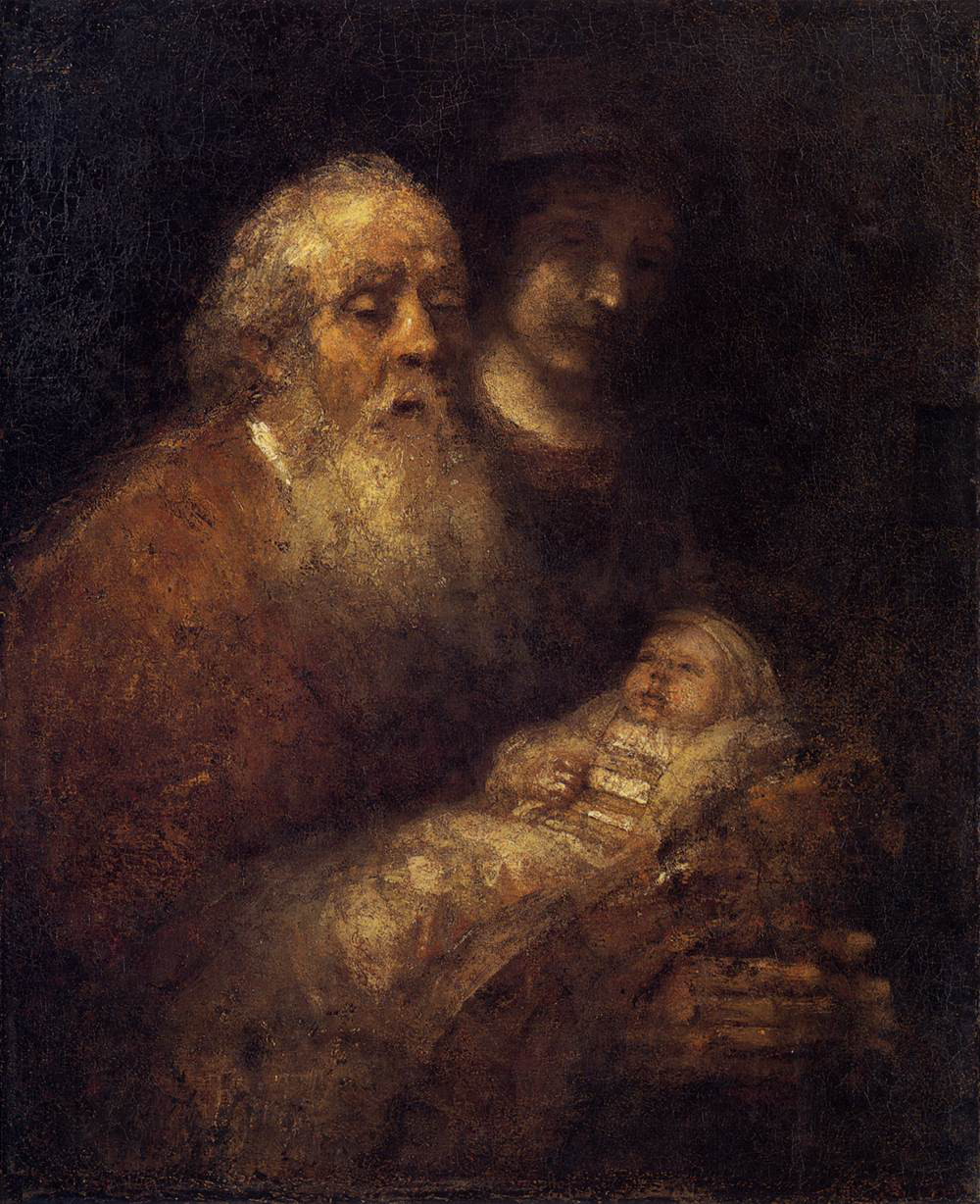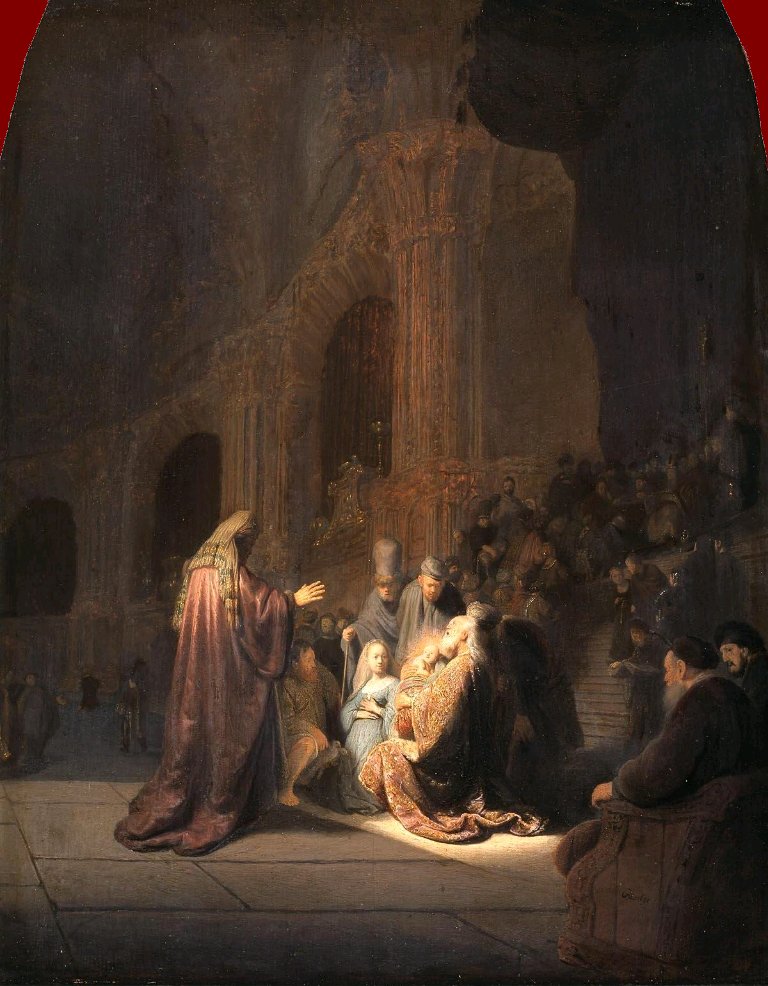Simeon’s waiting is over
Simeon was waiting for the consolation of Israel
(Luke 2:15). Waiting. That’s something we usually don’t consider to be a very
good thing. In fact, to most of us, WAIT is a four-letter-word. We are forced
to wait in checkout lines, to wait at the doctor’s office, and to wait for the
repairman to show up at our home.
We think microwave popcorn takes too long, so how
can we be expected to wait?!
Advent forced us to wait. Four weeks of waiting.
While the rest of our nation was physically, emotionally and monetarily spent
by the time December 25 finally rolled around, the Christian Church was just
getting around to celebrating Christmas. Waiting encourages us to slow down,
notice what is going on around us, look forward, look backward, anticipate and
wait to celebrate. Waiting gives us opportunities for conversation and
meditation that we might not otherwise have in our busy and hectic lives.
But when the waiting is over, it is time to
rejoice! To break forth in jubilation! When we finally reach the front of the
line, when our name is called, when we finally hear the knock on the door. And
now our Advent waiting is over. We have ripped into the Christmas presents,
visited with our relatives and broken forth with Christmas hymns and carols.
Our waiting is over – not because we have celebrated Christmas but because
Christ has come in the flesh.
Simeon was waiting for the “consolation of Israel”
which means the relief or redemption of Israel. Simeon had been told by the
Holy Spirit that he would not die until he had seen the Lord’s Christ. We can
imagine every morning Simeon waking up and wondering, “Is this the day?” Every
child who came into the temple would make him ask, “Is this the One?”
Simeon is a man on tiptoes, wide-eyed and watching
for the One who will come to save Israel. Studying each passing face. Staring
into the eyes of strangers. Patiently vigilant. Calmly expectant. Eyes open.
Arms extended. Searching the crowd for the right face, and hoping that face
appears today.
We can learn a lot from aged Simeon, because
you’ve probably noticed how short-sighted we all are. We are like children: “I
want it now!” Waiting, patience and thinking ahead are all learned behaviors,
skills that need to be taught. It is easy to live for just right now, to
indulge our sinful nature and gratify our natural cravings. Drug or alcohol
addictions, out-of-wedlock childbirths and credit card debts all “happen” to
people who couldn’t defer gratification to a later time.
God’s ultimate gift to you is to let you live with
Him forever. But that wonderful destination can seem so distant as not to
exist. Future thinking is an important skill that each of us needs to cultivate
in our own heart. That’s why St. Paul writes, “As God’s chosen people, holy and
dearly love, clothe yourselves with compassion, kindness, humility, gentleness
and patience” (Colossians 3:12).
Waiting is not a weakness. It comes from the
serene confidence that God will keep all His promises, that our future is going
to be way better than our past, and that God is managing all the events of our
lives to get us to the finish line of faith intact.
What joy must have filled Simeon’s soul when His
waiting was over! His heart must have skipped a beat when Mary and Joseph
walked into the temple carrying their Son. The Holy Spirit whispered into
Simeon’s spirit, “This is the One you’ve been waiting for.” And Simeon gathered
the little Child in his old arms and lifted his weary eyes to heaven and broke
forth in song.
In “Simeon’s Song of Praise,” Rembrandt portrays the
joy and peace with which Simeon received the Christ Child. Rembrandt focuses
entirely on Simeon’s emotion by leaving out almost all other figures. He
doesn’t even picture the temple where this event took place. That is how deeply
moved Rembrandt must have been by the subject of Simeon.
This may very well have been Rembrandt’s last
painting. It was found unfinished in his workshop the day after he died in
1669. The woman with Simeon was probably added after Rembrandt’s death by
someone else. Some think she is Mary, others are convinced she must be the
prophetess Anna.
Rembrandt must have been fascinated by this
subject because he created at least two paintings and several drawings about
it. The contrast with his great 1631 painting could hardly be stronger!
In this painting, entitled “Simeon in the Temple,”
Rembrandt displays the scenery of the temple and its courtyard. A great throng
is gathered. A surprised Mary kneels next to Simeon, who is holding the Infant
in his arms. Joseph is kneeling next to her with the two pigeons for the
sacrifice. They are in front of the steps that leads to the high priest’s
throne.
What is most striking about this picture is the
light. Everywhere else in the painting, the people are in shadows. But there is
a light upon Simeon and the holy family. If you look closely, the light is not
shining upon the Infant. Rather, the light is coming from the Infant!
Rembrandt is depicting the Child as the source of
the light, for He truly is what Simeon calls Him, “a light to lighten the
Gentiles” (Luke 2:32)
Rembrandt, like other artists
and theologians, portrays Simeon in both of his paintings as being
well-advanced in years. Simeon’s time of service has come to an end for God has
kept His promise. Simeon’s song rings out: “Sovereign Lord, as you have promised, you now dismiss your servant in
peace. For my eyes have seen your salvation, which you have prepared in the
sight of all people, a light for revelation to the Gentiles and for glory to
your people Israel ” (Luke 2:29 -32). You can almost hear the relief in his
voice, for he is at peace. His tired, old eyes have seen the Lord’s salvation.
His weary arms have held the Prince of Peace. Though Jesus has yet to be
visited by the Magi, step into the Jordan River, do battle with the devil in
the wilderness, drive out any demons or diseases, or preach on the Mount;
though He has yet to be betrayed, arrested, scourged, crucified, and laid in
the tomb – it is as good as done.
The waiting was over.
Make no mistake, Simeon is now saying he’s free to
leave. Not leave the temple, but die. When I was a kid, when we would sing
Simeon’s Song after Holy Communion, I used to think we were thanking God
because we were free to go home from church now. That was my prayer, “Lord, now
lettest thou thy servant, depart in peace.” But that’s not what Simeon was
singing. He was saying, “Now I can die and rest in peace. I am released from
life’s sentence and free to die. I have seen Your salvation and I know it’s
mine in this little Child.”
We are free to go for the same reasons. Not to go
home from church, but to go home to heaven. We have worshiped the Child in the
manger. We have praised the Savior upon the cross. We have glorified the
Redeemer risen from the tomb. Like Simeon, we can truly depart in peace. Our
wait is over.
It is time to rejoice!


Comments
Post a Comment